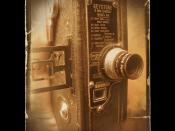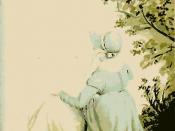Both Emma and Clueless offers a stratified and microcosmic society of the early 18th and late 20th century. The small village of Highbury in England, and Beverly Hills America, are seen as the leader in popular culture in its time. In Austen's world, the French Revolution was beginning to question social hierarchy and the privileges of the gentry, where the upper class's charitable duties to lower classes are required to maintain the class system. The US too feels that their status entails an obligatory duty to extend charity beyond the borders, thus the male characters Mr Knightley and Josh engage in charity duties. In Clueless the males are still portrayed as the ones who provide financial stability. Mr Woodhouse and Mr Knightley, being a landowner and magistrate, are on the top of social hierarchy in Highbury. Likewise, Cher's father's powerful position in Beverly Hills is reinforced through locating the camera from his back.
In addition, rank and status are still entrenched social indicators of worth and social acceptance. This is especially evident in the scene where Cher introduces the different social groups to Tai, which resonates with Emma's derogatory remark "the yeomanry are precisely the order of people with whom I feel I can have nothing to do.
Upon closer examination insight is given into the changes that have occurred. In 19th century England, marriage was seen as a way to climb social ladder and guarantee financial security. However in Clueless marriage is no longer taken as a serious issue, as shown in the visual joke of the marriage motif at the end. Postmodernism was also unheard of in Emma's time. In Clueless it is portrayed as destroying the fabric and uniqueness of Cher's society. Distinction between high and low culture have become blurred, as seen in the references to...



Nice...
it's good, but i think you shoudl make it more emotional... add some drama to it, like add a few adjectives here and there to engage the audience and get your point of view across...
I think 85% is a generous mark for an essay of this length... 700 words should not give 85%.. you were VERY lucky to get such a great mark!!!
2 out of 2 people found this comment useful.